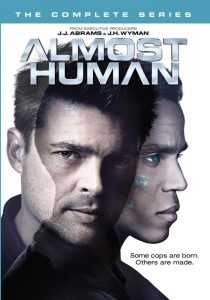Awhile back, I engaged in a chicken-or-egg-style argument with a co-worker about mid-20th-century civil rights legislation: Were the laws piggybacking on public sentiment, or did they shape public sentiment? The more I think about it, neither extreme is correct. Many citizens were ahead of the law (they believed blacks and whites should have equal rights, and hoped someday that laws would reflect that) and many other citizens were behind the law (once legislation was in place, they accepted that people should be treated equally). Simply put, law is not the sole cause of behavior, but nor is it irrelevant in shaping behavior.
I subscribe to the theory that the populace at large tends to be ahead of lawmakers on issues of the day. Today, polls show a majority of citizens support legal gay marriage and legal marijuana, yet the laws of the land don’t reflect that (yet). On the other hand, laws can be useful tools for accelerating the acceptance of new values, because most TV news and most TV fiction use the prism of “legal or illegal” more so than “right or wrong.” Because of this hang-up, TV is often horrible at seeing into the future. But I think it can portray the past quite effectively.
A prime example of this phenomenon came up on last week’s “The Carrie Diaries,” the current season of which is set in 1985. Walt, although completely out of the closet with his friends and family, rejects the gay community (even rejecting his boyfriend’s use of the phrase “gay community”) and returns to his bigoted mother’s home by episode’s end. Yes, Walt is gay, but he wants nothing to do with AIDS scares or flamboyant NYC gay clubs. And he wants to have kids and a white picket fence.
“Carrie Diaries” is hit-and-miss on capturing the time period. (It generally avoids anachronisms, but sometimes wants to be too modern: For example, Carrie’s dad has a cellphone. It’s a giant phone, which is historically accurate, but the fact that he has one at all in 1985 pushes the boundaries of likelihood too far.) But the way it handled Walt’s dilemma showed its awareness of the time period: None of the characters speak of a future where gay marriage and adoption are allowed by society or the state. Walt wants things he believes are impossible for a gay man. The fact that no character says, “Well, maybe in 20 years …” is sharp writing, because very few people can imagine into the future like that.

On the other hand, writers on sci-fi shows MUST imagine what the future will be like, not only in terms of technology, but also in terms of mainstream political views. “Almost Human” is a serial offender of a failure to do so. It’s set in 2048 but it feels SO 2014. (Or maybe the near future, to allow for androids on the police force. But definitely not 2048.) While “Almost Human’s” design is futuristic in some ways (it’s a cleaner “Blade Runner”), its vision of the future is essentially “Today, except with better technology.” In other words: “Carrie Diaries” puts itself in 1985, rather than being bogged down by 2014, but “Almost Human” can’t put itself in 2048 because it’s too bogged down by 2014.

I like some things about “Almost Human” (namely the banter between Dorian and Kinnex), but it lacks the imagination to see very far into the future. It did a drug-war episode where the drug is a glowing green ooze. But we all knew it was a stand-in for meth. The characters’ views on drugs parallel today’s mainstream views, but even a cursory glance at polls suggests that society and government are heading in a direction of drug legalization, which would therefore make an underground drug like the green ooze less likely to gain a foothold. (Maybe your theory on how laws affect drug markets is different than mine, and that’s fine. My point here is that the mainstream view in 2048 is almost certainly going to be different from today’s, just as the view on gay rights changed drastically from 1985 to 2014. At any rate, if you’re making a sci-fi series, showing a future ideologically identical to today is a boring storytelling choice.)
Last week, “Almost Human” did a pretty decent story of a psychopath who puts people in “Saw”-style death traps and films them on the internet; “Millennium” did a similar episode in the 1990s, but this one delves more into the shallowness of Internet chatting, with many people rooting for the victims or police officers to die at the psychopath’s hand. Still, it was another instance where “Almost Human” showed it could see only a couple years into the future (It called the unregulated Internet “Darknet,” acknowledging both the inevitability of government regulation and society’s workarounds). But it couldn’t imagine a couple decades into the future, as it claims to.
“Carrie Diaries,” at its best, shows 1985 as it really was, thus illuminating how things have changed; if “Almost Human” did the same for 2048, we’d get episodes exploring human-android marriage rights, illuminating how things could change further, both in terms of laws and societal views. It’s a sci-fi writer’s duty to not only dream up the future, but also to imagine how Future John Q. Pubic will feel about issues of his day. If “Almost Human” showed human-android couples walking around with full legal rights and very little bigotry from the populace, it would deliver an obvious yet oh-so-important message: As long as human beings are not hurting other human beings, we should not fear or outlaw their behavior. (The show also needs flying cars, but I understand that’s a budgetary issue.)
TV shows made in 1985 couldn’t envision such a strangely tolerant future, and it’s a shame that TV shows of 2014 still can’t.

